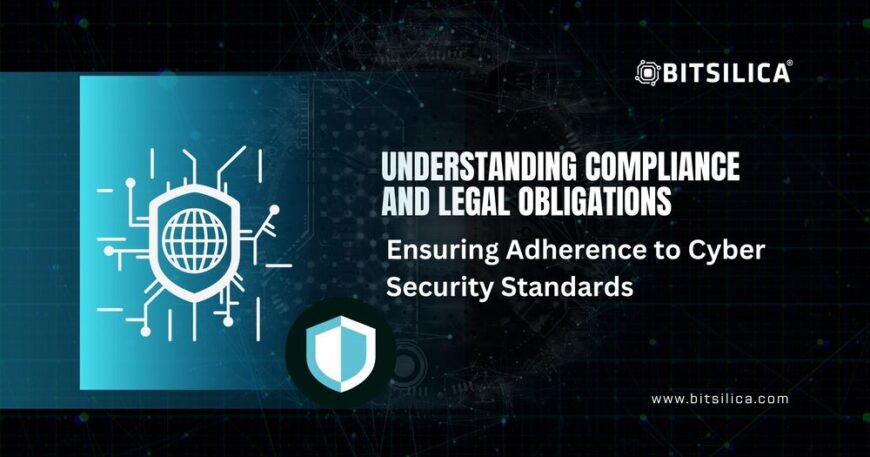Understanding Compliance and Legal Obligations: Ensuring Adherence to Cyber Security Standards
Introduction
Compliance with regulatory requirements and legal obligations is crucial for protecting sensitive information and maintaining trust with clients. Failure to comply can result in significant penalties, legal actions, and damage to an organization’s reputation. This blog post will explore best practices for ensuring compliance and fulfilling legal obligations, with an emphasis on the importance of mandated training for engineers.
Understanding Compliance and Legal Obligations
Compliance involves adhering to laws, regulations, standards, and policies designed to protect sensitive data and ensure its proper handling. These requirements vary depending on the industry, location, and type of data being handled.
Key Regulations and Standards:
• General Data Protection Regulation (GDPR): A regulation in the European Union that focuses on data protection and privacy.
• Health Insurance Portability and Accountability Act (HIPAA): A US regulation that protects patient health information.
• Payment Card Industry Data Security Standard (PCI DSS): A security standard for organizations handling credit card information.
• Sarbanes-Oxley Act (SOX): A US law that sets requirements for financial reporting and auditing.
Example: In 2018, a major social media company faced a $5 billion fine for violating GDPR, underscoring the importance of adhering to data protection regulations.
Identifying Relevant Regulations and Standards
Organizations must identify the regulations and standards applicable to their industry and operations to ensure compliance.
Best Practices:
• Conduct a Compliance Assessment: Identify all relevant regulations and standards based on the organization’s operations, industry, and location.
• Consult Legal Experts: Work with legal experts to interpret regulations and ensure that compliance requirements are understood and implemented.
• Regular Reviews: Periodically review compliance requirements to stay updated with any changes or new regulations.
Example: A financial institution conducted a comprehensive compliance assessment and implemented measures to ensure adherence to PCI DSS, protecting customer credit card information.
Implementing Compliance Programs
Effective compliance programs involve establishing policies, procedures, and controls to ensure adherence to regulations and standards.
Best Practices:
• Develop Policies and Procedures: Create comprehensive policies and procedures that align with regulatory requirements and industry standards.
• Assign Responsibility: Designate a compliance officer or team responsible for overseeing compliance efforts.
• Implement Controls: Establish technical and administrative controls to ensure compliance with policies and procedures.
Example: A healthcare organization implemented a HIPAA compliance program, including policies for data handling and technical controls for data protection, reducing the risk of regulatory violations.
Importance of Mandated Training for Engineers
Client-mandated training ensures that engineers understand and comply with specific security and regulatory requirements, enhancing overall security and compliance efforts.
Best Practices:
• Complete Required Training: Engineers must complete all mandated training as part of their onboarding process.
• Ongoing Education: Provide continuous education and training to keep engineers updated on regulatory changes and best practices.
• Track Training Compliance: Maintain records of completed training to demonstrate compliance and identify any gaps.
Example: A tech company required all engineers to complete GDPR training as part of their onboarding, ensuring that they understood data protection requirements and reducing the risk of non-compliance.
Conducting Regular Audits and Assessments
Regular audits and assessments help ensure that compliance measures are effective and identify areas for improvement.
Best Practices:
• Internal Audits: Conduct internal audits to evaluate compliance with policies, procedures, and regulatory requirements.
• Third-Party Audits: Engage external auditors to provide an objective assessment of compliance efforts.
• Risk Assessments: Perform regular risk assessments to identify and mitigate potential compliance risks.
Example: A multinational corporation conducted regular internal and third-party audits, ensuring ongoing compliance with SOX and other relevant regulations.
Maintaining Documentation and Records
Maintaining accurate documentation and records is essential for demonstrating compliance and supporting audit efforts.
Best Practices:
• Document Policies and Procedures: Keep detailed records of compliance policies, procedures, and controls.
• Maintain Training Records: Track and document all completed training sessions for employees.
• Record Audit Findings: Document the results of audits and assessments, including any corrective actions taken.
Example: A retail company maintained comprehensive documentation of its PCI DSS compliance efforts, facilitating successful audits and avoiding penalties.
Responding to Compliance Violations
Organizations must be prepared to respond effectively to any compliance violations to minimize impact and prevent future occurrences.
Best Practices:
• Incident Response Plan: Develop an incident response plan that includes procedures for handling compliance violations.
• Investigate Violations: Thoroughly investigate any compliance violations to determine the cause and implement corrective actions.
• Report Violations: Report significant compliance violations to regulatory bodies as required.
Example: An organization faced a data breach due to a compliance violation but minimized the impact by quickly implementing its incident response plan and reporting the breach to regulatory authorities.
Ensuring compliance and fulfilling legal obligations are essential for protecting sensitive information and maintaining trust with clients. By identifying relevant regulations, implementing compliance programs, conducting regular audits, maintaining documentation, and completing mandated training, organizations can significantly enhance their compliance efforts. Stay vigilant and proactive in your compliance initiatives to safeguard against regulatory violations and protect your organization’s reputation.





